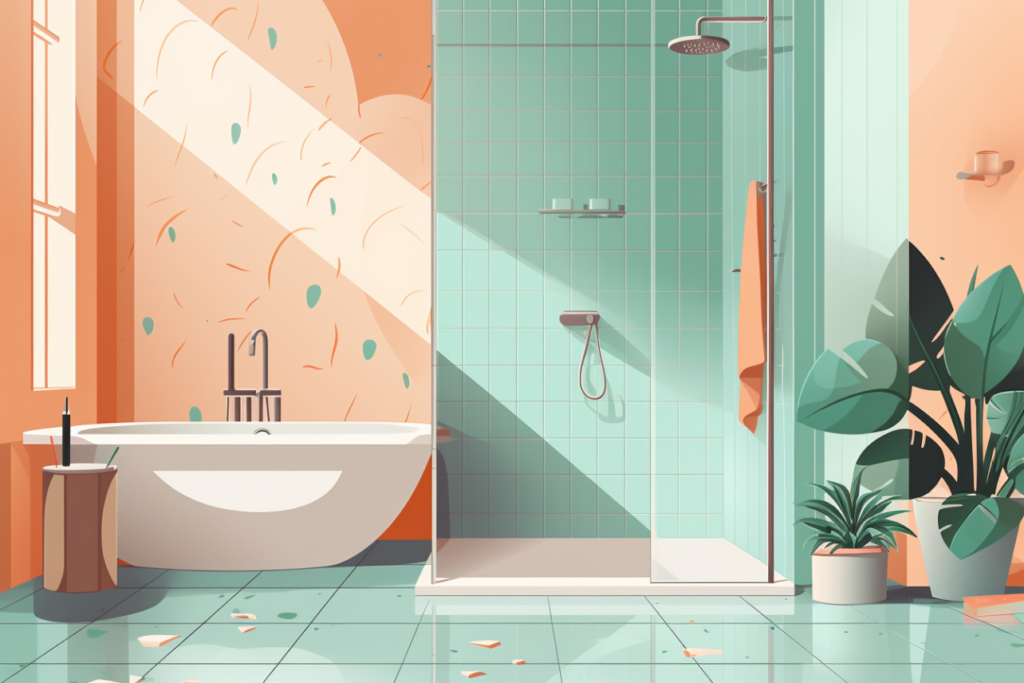When it comes to home maintenance, we often tend to focus on visible issues like leaky faucets or cracked walls. However, hidden threats can endanger our health without us even realizing it. One such threat is pink mold, also known as pink mildew, which can silently grow in our homes and cause a range of health problems. In this blog post, we will explore what pink mold is, how it forms, its potential dangers, and, most importantly, how to identify and effectively combat it.
Understanding Pink Mold
Contrary to what its name suggests, pink mold is not actually a mold but a type of bacteria called Serratia marcescens. It thrives in damp environments, making areas like bathrooms, kitchens, and basements its favorite breeding grounds. The characteristic pinkish hue observed in these colonies is due to a pigment produced by the bacteria to protect itself from UV radiation.
Pink mold, scientifically known as Serratia marcescens, is different from many other molds in several ways:
Color: Pink mold gets its name from its distinct pink or pinkish-orange color, which sets it apart from the more common green, black, or gray molds found in homes. This unique coloration makes it easily recognizable.
Classification: Pink mold is not a true mold but rather a type of bacteria. It belongs to the genus Serratia and is classified as a Gram-negative, rod-shaped bacterium. Most household molds belong to the fungi kingdom.
Preferred Habitat: While other molds thrive in dark, damp, and cool environments, pink mold prefers moist and humid conditions. It often appears in places like bathroom tiles, shower curtains, sink drains, and on soap scum. This preference for wetter environments distinguishes it from many other molds.
Odor: Pink mold may produce an unpleasant, musty or earthy odor. The smell can be one way to identify its presence in a home.
Health Risks: Pink mold is generally considered less harmful than some molds, such as Stachybotrys (black mold), which can produce mycotoxins that pose health risks. However, pink mold can still cause health problems, especially for individuals with weakened immune systems. Exposure can lead to respiratory issues, skin irritation, and other health concerns.
Cleaning: Pink mold can be removed by cleaning with a mixture of water and detergent or a specialized mold and mildew cleaner. Unlike some molds that may require more aggressive cleaning measures, pink mold is relatively easier to clean off surfaces.
Food Source: Pink mold can grow on various organic materials, including soap scum, grout, and other bathroom residues, but it is less likely to grow on food items than some molds like Penicillium or Aspergillus.
Growth Rate: Pink mold can proliferate rapidly under the right conditions, forming a visible colony within days. Its growth rate is often faster than that of other molds.
Persistence: Pink mold can be persistent and may return after cleaning if the underlying moisture problem is not addressed. Preventing its return often involves reducing moisture in the environment.
Despite its differences from other molds, pink mold should still be taken seriously, especially in cases of infestations or when individuals experience health issues related to mold exposure.
Identifying Pink Mold

There are a few different ways to identify pink mold. Here are a few of the most common ways:
Visual Appearance
Pink mold typically appears as a slimy, pink or pinkish-orange film on wet surfaces, such as shower curtains, tiles, grout lines, and even kitchen appliances. It can also attach itself to organic materials commonly found in bathrooms, including soap scum, shampoo bottles, and loofahs.
Smell
One of the primary indications of a pink mold infestation is an earthy or musty odor. Since pink mold thrives in areas with standing water or moisture, your nose might detect an unpleasant smell before you even notice the visible signs.
Health Symptoms
Prolonged exposure to pink mold can trigger various health issues, especially for people with weakened immune systems. These symptoms may include respiratory problems such as coughing, sneezing, congestion, aggravated allergies, and skin infections. If you notice these symptoms without apparent cause, it might be worth investigating for pink mold in your home.
Combating Pink Mold
Prevention is key when dealing with pink mold, as it can be difficult to eradicate once it takes hold. Here are some practical steps to prevent and remove pink mold from your home:
Proper Ventilation
Ensuring proper air circulation is crucial in preventing excess moisture buildup. Invest in exhaust fans for your bathrooms and kitchen to help expel humid air and prevent it from settling on surfaces.
Regular Cleaning
Routinely clean any wet areas in your home, paying special attention to showers, sinks, and tiles. Regularly wash shower curtains and towels, which can harbor moisture and become a breeding ground for pink mold.
Drying Wet Surfaces
After using water-intensive appliances or surfaces, such as sinks, bathtubs, or showers, make sure to dry them thoroughly. Leaving them wet for extended periods creates a conducive environment for pink mold growth.
Eliminating Leaks
Inspect your home for leaks in plumbing, roofs, or windows, as dripping water is a perfect breeding ground for pink mold. Promptly fix any leaks and ensure proper insulation to prevent further moisture buildup.
Using Disinfectants
If you suspect pink mold growth, it is essential to eliminate it promptly. Wearing protective gloves, use a commercial mold and mildew cleaner to thoroughly clean affected areas. Be mindful of proper ventilation and ensure the cleaner does not emit toxic fumes.
Stop the Money Leak: Common Ways Homes Waste Cash
Pink Mold FAQs
Here are some frequently asked questions (FAQs) about pink mold:
Is pink mold harmful to my health?
While pink mold is generally not as harmful as other types of mold, it can still cause health issues, especially for individuals with weakened immune systems. Pink mold exposure could lead to respiratory problems and skin irritation.
How can I remove pink mold from surfaces?
You can remove pink mold by scrubbing affected surfaces with a mixture of water and detergent or a specialized mold and mildew cleaner. Wear gloves and use proper ventilation during cleaning.
Can pink mold grow in my HVAC system?
Yes, pink mold can grow in HVAC (heating, ventilation, and air conditioning) systems, especially in humid climates. Regular HVAC maintenance can help prevent mold growth in these systems.
Is bleach effective in removing pink mold?
Bleach can effectively kill pink mold but may not remove the pink stain. It’s essential to clean the surface thoroughly after using bleach to prevent its return.
Can pink mold grow on food or in water?
Yes, pink mold can grow on various organic materials, including food and in water. It’s important to discard any food or drink contaminated with pink mold.
Even the Smartest Families Throw Away Cash at Home
Does pink mold have a foul odor?
Pink mold can produce an unpleasant odor, especially in areas with heavy infestations. It may have a musty or earthy smell.
Can I prevent pink mold in my shower by using a squeegee after each use?
Using a squeegee to remove excess water from shower surfaces after each use can help prevent pink mold by reducing moisture. It’s a good practice for maintaining a dry bathroom environment.
When should I seek professional help for pink mold removal?
You should consider professional mold remediation services if you have a severe pink mold infestation, especially in your HVAC system or if you or your family members experience persistent health issues related to mold exposure.
Remember that prevention is the best approach to dealing with pink mold. Regular cleaning, ventilation, and moisture control can help reduce the likelihood of pink mold growth in your home.
While pink mold may not be as well-known as other common molds, it poses potential risks to our health and should not be taken lightly. Understanding what pink mold is, how to identify it, and taking adequate measures to prevent its growth can ensure a healthier living environment for you and your family.
Remember, if you suspect a pink mold infestation beyond your control or are dealing with persistent health symptoms, it is advisable to seek professional help to mitigate the issue efficiently.
You might also be interested in: Mold Vs Mildew – How To Identify It And The 4 Best Ways To Get Rid Of It




